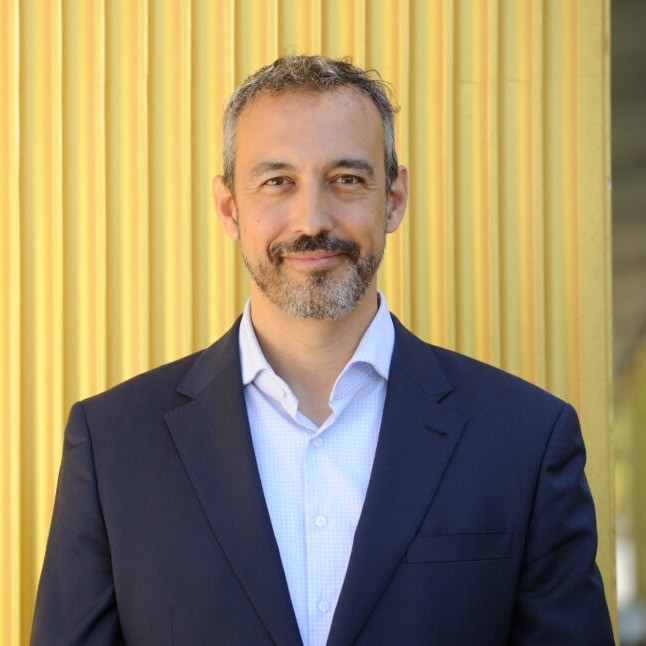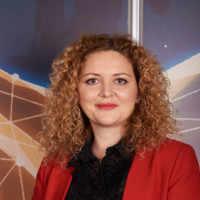V Conference on Competition and Regulation in the Telecommunications Market
IESE Barcelona · June 20, 2024
Digital Networks Act to redefine the DNI of our telecoms regulation & Gigabit Infrastructure Act (GIA): reducing costs or more burden?
As the telecommunications sector undergoes rapid evolution, fueled by advancements in technology and changing consumer demands, the implementation of legislative frameworks such as the Gigabit Infrastructure Act (GIA) and Digital Networks Act (DNA) has emerged as a critical step towards shaping the future of digital connectivity in the EU.
The Gigabit Infrastructure Act (GIA) and the Gigabit Recommendation represent significant milestones in addressing the pressing need for faster, more reliable, and data-intensive connectivity across the European Union. As the demand for high-capacity networks continues to rise with the proliferation of advanced technologies such as cloud computing, artificial intelligence, and virtual reality, it is imperative to ensure that regulatory frameworks and infrastructure deployment strategies are aligned to meet these demands efficiently and effectively. The GIA, which is set to become law following a recent political agreement, aims to streamline the deployment of very high-capacity networks (VHCN) by addressing key hurdles such as complex administrative procedures and high deployment costs. This act will play a crucial role in achieving the 2030 Digital Decade target on connectivity, ensuring widespread access to fast Gigabit connectivity and mobile data by 2030.
Key measures introduced by the GIA include:
- Shared use of infrastructure to optimize resources and reduce costs.
- Co-deployment and coordination of civil works to expedite broadband expansion.
- Streamlining administrative procedures related to network rollout to improve efficiency.
- Encouraging the provision of buildings with high-speed ready infrastructure to facilitate broadband deployment and adoption.
In parallel, the Gigabit Recommendation provides guidelines to National Regulation Authorities (NRAs) on designing access remedy obligations for operators with significant market power, promoting competition and smooth transition from copper to fiber. This recommendation replaces previous regulations to ensure a more cohesive and effective regulatory framework.
V Conference on Competition and Regulation in the Telecommunications Market
The Public-Private Sector Research Center of IESE Business School would like to invite you to the V Conference on Competition and Regulation in the Telecommunications Market organized with the collaboration of Cellnex. During the conference, we will delve into a range of topics related to these legislative frameworks with esteemed speakers and industry experts including Maarit Palovirta, Senior Director of Regulatory Affairs, ETNO; Tobias Martinez, Chairman, EWIA; Marc Realp, Secretario de Polítiques Digitals, Presidencia Generalitat Cataluña; Daniel Pataki, Chief Regulatory Officer, Cellnex; Aurelie Bladocha, Head of European Affairs, Vantage Towers.
We would like to invite you to take part in the conference, which will take place on IESE’s Barcelona Campus on June 20, 2024. Seats are limited, so registration will be on first come first served basis.
 |
 |
9:30-10:00 Registration
10:00 – 10:10 Session 1
Opening and Welcome.
Xavier Vives, Professor of Economics and Academic Director of the Public-Private Sector Research Center, IESE Business School
10:10 – 10:30 Keynote
The future of telecommunications in the EU: opportunities and challenges.
Przemyslaw Kordasiewicz, Deputy Head of Unit, B.3 (Markets), DG CONNECT, European Commission
10:25 – 11:25 Round-Table
‘Digital Networks Act’ to redefine the DNA of our telecoms regulation.
- Gonzalo López-Barajas, Director of Corporate Regulation, Telefónica
- Maarit Palovirta, Senior Director of Regulatory Affairs, ETNO
- Ignacio Vela Navarro-Rubio, Manager for Government Affairs & Public Policy, Google
- Tobias Martínez, Chairman EWIA
- Alejandra de Iturriaga, Director of Telecommunications and Audiovisual, CNMC (online)
Moderator: Xavier Vives, Professor of Economics and Academic Director of the Public-Private Sector Research Center, IESE Business School
11:25 – 12:00 Coffee Break
12:00 – 12:20 Introduction “The Gigabit Infrastructure Act’s Path to 2030″
- Hannele Lahti, DG CONNECT, European Commission (ONLINE)
12:20 – 13:20 Round Table
Streamlining Network Deployment: The Gigabit Infrastructure Act’s Path to 2030.
- Hannele Lahti, DG CONNECT, European Commission (online)
- David Ferrer, Strategic Advisor, Centre de Telecomunicacions i Tecnologies de la Informació de la Generalitat de Catalunya
- Ana Urban, Regulatory, Cellnex
- Aurelie Bladocha, Head of European Affairs, Vantage Towers
- Christian Hacker, Competition and Market Analysis Director
Moderator: Iñigo Herguera García, Prof. Departamento de Análisis Económico y Economía Cuantitativa en la Universidad Complutense de Madrid
13:20 – 14:20 Networking Cocktail

Christian Hacker
Competition and Market Analysis Director, Masorange

Alejandra de Iturriaga
Director of Telecommunications and Audiovisual, CNMC

Ana Urbán
Regulatory Cellnex

Jose Antonio Aranda
Director de Relaciones Institucionales, Cellnex Telecom S.A

Alicia Plana
Executive Director PPRSC, IESE Business School

Estefanía Alarcón
PPRSC Manager, IESE Business School

Esther Ribes
Research Events Unit Manager, IESE Business School
Accommodation.
IESE is a dynamic community of scholars and practitioners who will welcome you to Barcelona, a traditional and welcoming Mediterranean city. It is a city with a great number of tourist attractions and a friendly atmosphere that will offer conference participants and their families plenty of opportunities to enjoy their stay here, over and above the academic program we are preparing for you. Accommodations options near IESE:
- Sansi Pedralbes → 5-minute walk from IESE
Av. Pearson 1-3, 08034 Barcelona - Torre Girona Residence Halls → 10-minute walk from IESE
Passeig dels Til·lers, 19 , 08034 Barcelona - AC Victoria Suites → 15-minute walk from IESE
C/ Beltrán i Ròzpide, 7-9 (before Av. Pedralbes, 16), 08034 Barcelona - Abba Garden Hotel → 20-minute walk from IESE
C/ Santa Rosa, 33 , 08950 Esplugues de Llobregat, Barcelona - Upper Diagonal → 15-minute walk from IESE
Passeig de Manuel Girona, 7, 08034 Barcelona - Arenas Atiram → 11 minute from IESE by car
C/ Capitán Arenas, 20, 08035 Barcelona








